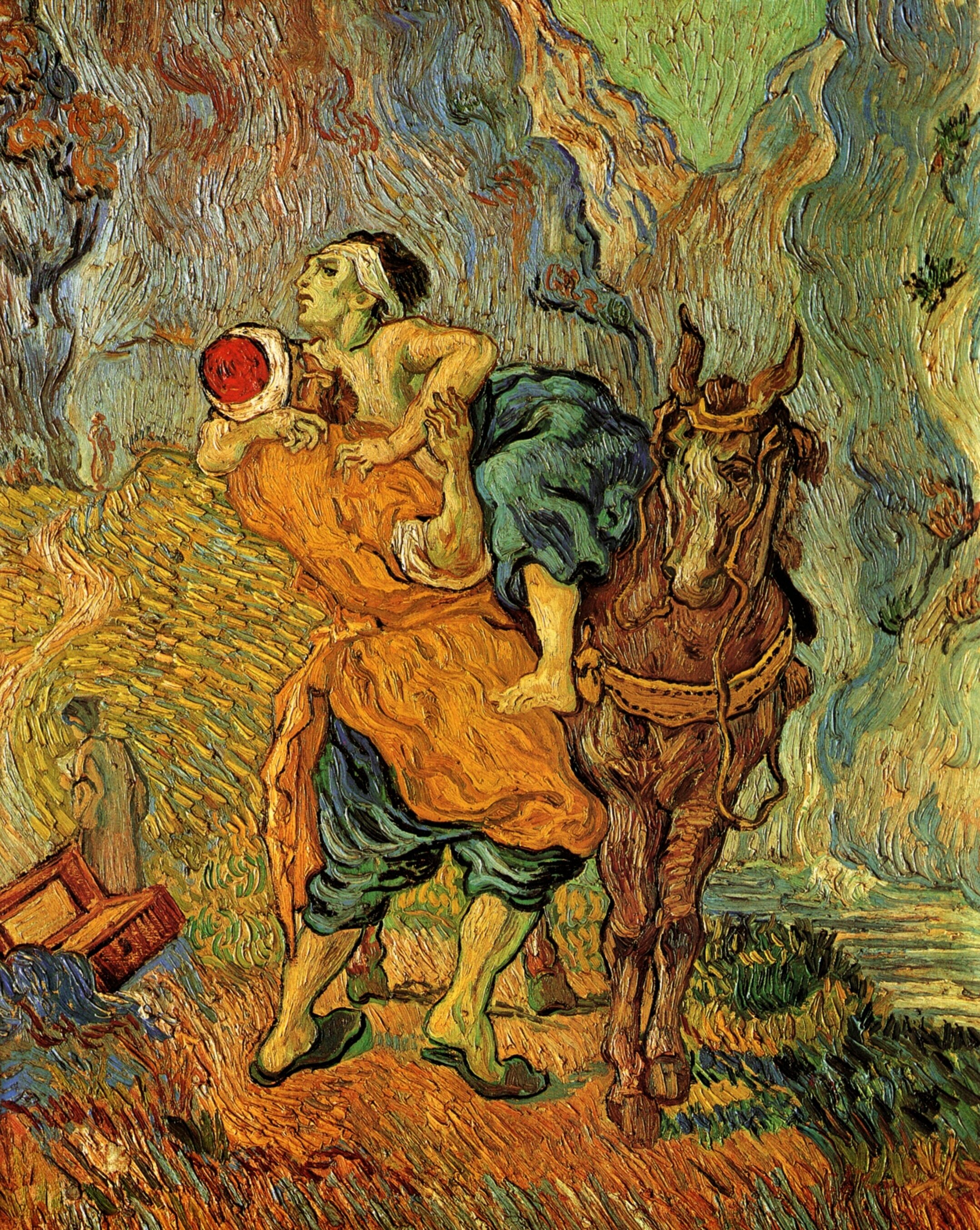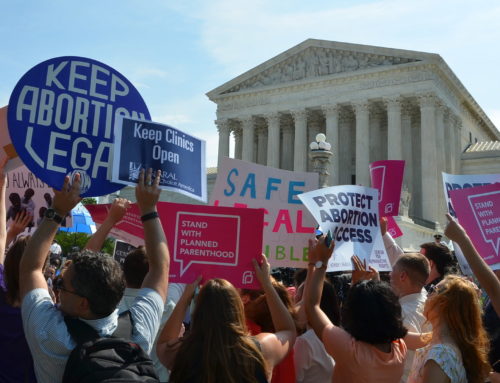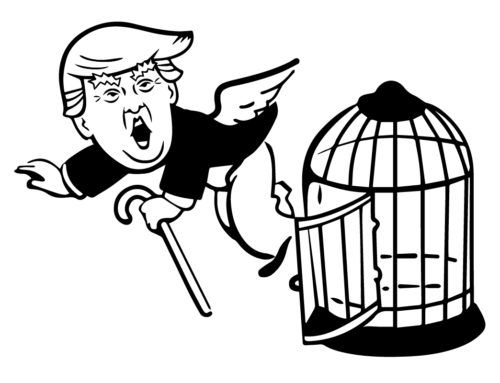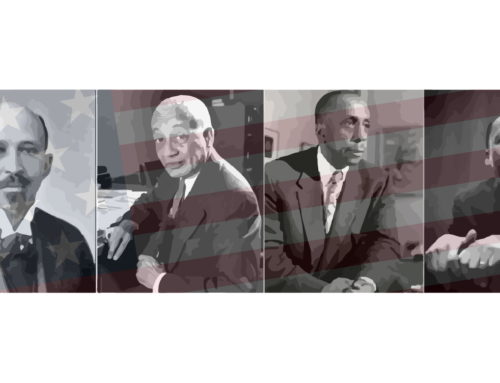By: Nathan Nobis and Kristina Grob
This article is part of a debate on abortion. For an introduction see: Arguing Dialectically about Abortion For an opposing view see: Untangling popular “pro-choice” claims and arguments concerning abortion.
Arguments for ethical and legal conclusions on the topic of abortion are often pursued dialectically, with positive arguments developed in response to contrary positions and objections.
In their recent open-access (meaning, free!) introductory book Thinking Critically About Abortion: Why Most Abortions Aren’t Wrong & Why All Abortions Should be Legal (Open Philosophy Press, 2019), Professors Nathan Nobis and Kristina Grob adopt this strategy. The review many common “question-begging” arguments (that is, arguments with premises that merely assume the conclusions they are intended to support) and other common, but demonstrably poor, arguments on all sides of the issues before getting to their main positive arguments. In an essay published after the book, they critique many “soundbite” arguments on the issues also.
This excerpt from their book presents some of this main discussion, that supports the main ethical conclusions from the book’s subtitle, concerning personhood and the moral significance of early fetuses lacking consciousness or feeling, as well what the right to life is not.
5.1.3 Fetuses are persons
Finally, we get to what some see as the core issue here, namely whether fetuses are persons, and an argument like this:
Fetuses are persons, perhaps from conception.
Persons have the right to life and are wrong to kill.
So, abortion is wrong, as it involves killing persons.
The second premise seems very plausible, but there are some important complications about it that will be discussed later. So let’s focus on the idea of personhood and whether any fetuses are persons. What is it to be a person? One answer that everyone can agree on is that persons are beings with rights and value. That’s a fine answer, but it takes us back to the initial question: OK, who or what has the rights and value of persons? What makes someone or something a person?
Answers here are often merely asserted, but these answers need to be tested: definitions can be judged in terms of whether they fit how a word is used. We might begin by thinking about what makes us persons. Consider this:
We are persons now. Either we will always be persons or we will cease being persons. If we will cease to be persons, what can end our personhood? If we will always be persons, how could that be?
Both options yield insight into personhood. Many people think that their personhood ends at death or if they were to go into a permanent coma: their body is (biologically) alive but the person is gone: that is why other people are sad. And if we continue to exist after the death of our bodies, as some religions maintain, what continues to exist? The person, perhaps even without a body, some think! Both responses suggest that personhood is defined by a rough and vague set of psychological or mental, rational and emotional characteristics: consciousness, knowledge, memories, and ways of communicating, all psychologically unified by a unique personality.
A second activity supports this understanding:
Make a list of things that are definitely not persons. Make a list of individuals who definitely are persons. Make a list of imaginary or fictional personified beings which, if existed, would be persons: these beings that fit or display the concept of person, even if they don’t exist. What explains the patterns of the lists?
Rocks, carrots, cups and dead gnats are clearly not persons. We are persons. Science fiction gives us ideas of personified beings: to give something the traits of a person is to indicate what the traits of persons are, so personified beings give insights into what it is to be a person. Even though the non-human characters from, say, Star Wars don’t exist, they fit the concept of person: we could befriend them, work with them, and so on, and we could only do that with persons. A common idea of God is that of an immaterial person who has exceptional power, knowledge, and goodness: you couldn’t pray to a rock and hope that rock would respond: you could only pray to a person. Are conscious and feeling animals, like chimpanzees, dolphins, cats, dogs, chickens, pigs, and cows more relevantly like us, as persons, or are they more like rocks and cabbages, non-persons? Conscious and feeling animals seem to be closer to persons than not. So, this classificatory and explanatory activity further supports a psychological understanding of personhood: persons are, at root, conscious, aware and feeling beings.
Concerning abortion, early fetuses would not be persons on this account: they are not yet conscious or aware since their brains and nervous systems are either non-existent or insufficiently developed. Consciousness emerges in fetuses much later in pregnancy, likely after the first trimester or a bit beyond. This is after when most abortions occur. Most abortions, then, do not involve killing a person, since the fetus has not developed the characteristics for personhood. We will briefly discuss later abortions, that potentially affect fetuses who are persons or close to it, [later in the book].
. . .
5.2.2 Early fetuses aren’t conscious & feeling: personhood and harm
The next positive arguments in defense of abortion depend on the scientific facts about early fetuses that we have emphasized over and over: they are not conscious, are not aware of anything, cannot feel anything, and so on: they are and have been entirely mindless so far. The proposal is that beings like this are very different from beings like us and babies and children, who are conscious: despite our being the same kind of beings in some ways, we are also different kinds of beings in other ways that are morally significant.
These observations motivate these principles:
- If a being is and has always been completely unconscious, that being is definitely not a person.
- If some being is definitely not a person, then it’s not wrong to kill that being.
This proposal is supported by, among other considerations and cases, the ideas that if someone permanently ceases to be a person (e.g., permanent, irreversible coma cases) or never becomes a person (e.g., anencephalic newborns) it can be permissible to bring about their death, perhaps even by killing their body, since their being alive is doing them no good. Cases like these are steps towards the above principles, which are related to this proposal:
- If a being is and has always been completely unconscious, that being cannot be harmed, which requires a “turn for the worse” for that being. But there is no “for that being” for early fetuses yet, so things can’t get worse for them. So killing them doesn’t harm them or make them worse off, compared to how they were, since they never “were” in a conscious way.
Given the fundamental moral significance of consciousness and all that results from that, the fact that early fetuses entirely lack it is arguably highly morally relevant to how they can be treated.
5.2.3 The right to life & the right to someone else’s body
Finally, suppose much of the above is mistaken and that fetuses indeed are persons with the right to life. Some think that this clearly makes abortion wrong. Philosopher Judith Jarvis Thomson famously argued in 1971 [“A Defense of Abortion.” Philosophy & Public Affairs 1, no. 1 (1971): 47-66] that this isn’t so. She observes that people often have a naive understanding of what the right to life is a right to. She makes her case with a number of clever examples, most famously, the “famous violinist”:
You wake up in a hospital, “plugged in” to a famous violinist, who needs to use your kidneys to stay alive. You were kidnapped for this purpose. If you unplug, he will die. But it’s only for nine months.
Does the violinist have a right to your kidneys? Do you violate his right to life if you unplug, and he dies? Most would say “no,” which suggests that the right to life is not a right to anyone else’s body, even if that body is necessary for your life to continue.
This suggests that, even if fetuses were persons with the right to life, they would not have a right to the pregnant woman’s body: only the woman herself has that right. So until there is a way to remove fetuses and place them in other wombs, abortion would be permissible, given women’s rights to their own bodies and related rights to autonomy and self-determination, especially about matters concerning reproduction, among other relevant rights. This discussion also suggests another definition of abortion:
- Definition 4: Abortion is the intentional withholding of what a fetus needs to live, to end a pregnancy.
Thomson’s insights are not without controversy, however. Some respond the violinist case is somewhat like a pregnancy that results from rape, since there’s no consent involved, but claim that pregnancies that don’t result from rape do give fetuses the right to the woman’s body because, they argue, the woman has done something that she knows might result in someone existing who is dependent on her.
Thomson, however, had other cases that partially address this type of concern: e.g., if someone falls in your house because you opened a window, they don’t have the right to be there, even though you did something that contributed to their being there; and, more imaginatively, if people sprouted from “people seeds” floating in the air, and you tried to keep them out of your house but one managed to get in and became dependent on your carpet for its gestation, that resulting person would not have a right to be there, despite your having done something that led to that person’s existence.
We should also notice that the claim that doing something that results in the existence of something uniquely dependent on you grants that something rights to your assistance might be question-begging. Compare doing something that results in the existence of a new plant or dish or random cells that is dependent on you: you wouldn’t be obligated to provide for that plant or cells. To assume that things are different with fetuses is, well, to assume what can’t be merely assumed, especially if we don’t already believe that early fetuses are persons with the right to life. Thomson assumed fetal personhood for the sake of argument to illustrate her claims about the right to life, but the facts of the matter—that early fetuses arguably aren’t persons or have characteristics that make them have a right to life—is surely relevant to assessing this type of claim when applied to actual cases of pregnancy.
It should be made clear though that even if the fetus doesn’t have a right to the pregnant woman’s body, there could be other rights or other obligations that could make abortion wrong nevertheless: e.g., if pregnancy were just 9 hours perhaps women would be obligated to be Good Samaritans towards them, even if fetuses didn’t have a right to the woman’s resources and assistance: ethics isn’t just about not violating rights. What’s important here is that rights to life and personhood are not the “slam dunk” against abortion, so to speak, that people often think they are: things are more complicated than that.
. . .
6 Conclusion
For important issues, we need well-developed reasons or arguments to decide what to believe and do about the issues. Many people say they just “feel” that abortion is wrong or their “opinion” is that it’s not wrong. But complex issues require informed, fair and honest critical thinking, not just mere “feelings” or “opinions,” and we hope this essay has modeled this type of systematic and serious engagement with the arguments and evidence. We hope that readers’ reflective observations about how we have stated and evaluated arguments will help them improve their own skills at engaging arguments on this and other issues, on their own and in discussion with others.
We have focused on disagreements about abortion, but we want to end on an agreement. Everyone agrees there should be fewer abortions. Even people who believe abortions are generally not wrong don’t think that having an abortion is just a great way to spend time and resources. So everyone could agree that we, as a society, should do more to reduce the “demand” for abortions: we could address the many causes that lead women to seek abortions. Some other countries don’t have as many abortions as the US does. In many cases this is because of deliberate choices they have made to make their countries more supportive of all of their citizens and make it easier for them to meet their economic, medical and familial needs. We too could be Good Samaritans, in these ways and more. This would be very good, not just for this issue but for who we are as people.
Image: The Good Samaritan, after Delacroix, Vincent van Gogh, 1890










Leave A Comment